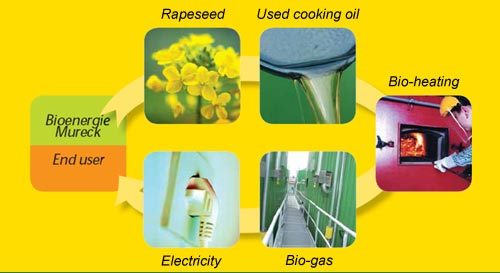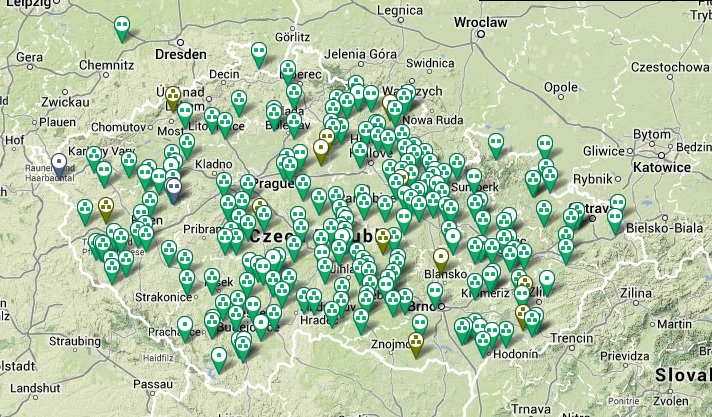Students:Group Three: Eliška, Kiki, Magda, Veronika: Difference between revisions
No edit summary |
No edit summary |
||
| Line 1: | Line 1: | ||
We started our day at the suburb of the city of Graz in the headquarter of the Saubermacher company that was built with considerations taken about the sustainable development using modern technologies and solar panels as an ecological source of energy. This private company seated next to the airport of the city of Graz developer gradually from a family-size company up to one of the greatest international specialists who occupy themselves with the sorting and subsequenting treatment of waste. Although the company is active in more European countries, the today’s lecture was dealing merely with the issue of handling the communal waste in Austria. | |||
The waste coming from the industry was set aside and the lecturer, MR. Richard Dornauer, was perfectly prepared and all of us were given a handout so that we could follow his presentation in an easier way. The company Saubermacher is mechanized from a great part and the human resources are existing merely as an controlling element at the very end of the process. Very interesting point was the issue of using residual plastic in the form of flakes as a fuel for a cement factory. Next to the provinces Styria, Vienna and Lower Austria has Saubermacher also 40 daughter companies in several European countries, including the Czech Republic. Where we can talk about the Rumpold Company that provides all services in the field of handling waste taking regards about the environment. Our whole field trip was perfect nevertheless we missed the opportunity to see the process ourselves. | |||
[http://www.hda-graz.at/data/media/aaf_media/big/1308575165_hs-ecoport1.jpg] | |||
Afternoon we came to the southeast border of Styria. In the city of Mureck we visited three companies cooperating on one site. From 1990 SEEG, Nahwärme and ökoStrom deal with bioenergy here. Before Nahwärme was set up Mureck district was dependent on fossil fuels whereas surrounding forest were full of useless wood. The idea of having a local source for heating developed into todays company which collects woods from surrounding areas and during the winter it burns the material and produces heat for Mureck's schools, municipal buildings, church and 210 households. | Afternoon we came to the southeast border of Styria. In the city of Mureck we visited three companies cooperating on one site. From 1990 SEEG, Nahwärme and ökoStrom deal with bioenergy here. Before Nahwärme was set up Mureck district was dependent on fossil fuels whereas surrounding forest were full of useless wood. The idea of having a local source for heating developed into todays company which collects woods from surrounding areas and during the winter it burns the material and produces heat for Mureck's schools, municipal buildings, church and 210 households. | ||
Revision as of 23:26, 11 September 2013
We started our day at the suburb of the city of Graz in the headquarter of the Saubermacher company that was built with considerations taken about the sustainable development using modern technologies and solar panels as an ecological source of energy. This private company seated next to the airport of the city of Graz developer gradually from a family-size company up to one of the greatest international specialists who occupy themselves with the sorting and subsequenting treatment of waste. Although the company is active in more European countries, the today’s lecture was dealing merely with the issue of handling the communal waste in Austria.
The waste coming from the industry was set aside and the lecturer, MR. Richard Dornauer, was perfectly prepared and all of us were given a handout so that we could follow his presentation in an easier way. The company Saubermacher is mechanized from a great part and the human resources are existing merely as an controlling element at the very end of the process. Very interesting point was the issue of using residual plastic in the form of flakes as a fuel for a cement factory. Next to the provinces Styria, Vienna and Lower Austria has Saubermacher also 40 daughter companies in several European countries, including the Czech Republic. Where we can talk about the Rumpold Company that provides all services in the field of handling waste taking regards about the environment. Our whole field trip was perfect nevertheless we missed the opportunity to see the process ourselves.
Afternoon we came to the southeast border of Styria. In the city of Mureck we visited three companies cooperating on one site. From 1990 SEEG, Nahwärme and ökoStrom deal with bioenergy here. Before Nahwärme was set up Mureck district was dependent on fossil fuels whereas surrounding forest were full of useless wood. The idea of having a local source for heating developed into todays company which collects woods from surrounding areas and during the winter it burns the material and produces heat for Mureck's schools, municipal buildings, church and 210 households.
The idea to build ökoStrom – biogas power plant – came in 2000. Now it collects in huge tanks sewage and liquid rests from agriculture. Than the mixture is closed into tanks and under anaerobic process it produces biogas which produces electricity as well as little bit of heat. The company together with locals decided to use better technology for emmision extraction from the escaping air.
SEEG, last of the trinity, is responsible for biodiesel production from rapeseeds. Biodiesel is used by local farmers but mainly by public transport companies and SEEG’s trucks. In addiction it also powers biogas unit and local heating. There is also possibility to use cooking oil as additional material. Few years before restaurant chain were happy to get rid of used cooking oil but after that its tresury was discovered and competitivness between biofuels companies rose, also its price has rised. Because of the lower price of electricity the companies are not only dependent on subsidies but also other new investments must be found. Therefore there is new PV power plant on the field next to the site. Even more efficient is the idea to build a glasshouse with organic vegetable and PV panels on the roof which is better subsidized.
The motto of the company: Nature-Energy-Mureck Region-Peace, well expresses its pfilosophy and the emphasis on local development and self-sufficiency. It may be caused also by the fact that majority of owners are local farmers. From the presentation of the place what I would highlight are the complexity of bioenergy cycle and the best technologies available.

Img 1: Mureck Energy Cycle
Sources:
BIODIESEL
Advanteges
- One of the main biodiesel fuel advantages is that it is less polluting than petroleum diesel and also its renewability.
- It has excellent biodegradability (for 28 days is degraded by 95% compared to 40% biodiesel, petroleum diesel).
- The lubricating property of the biodiesel may lengthen the lifetime of engines
- Pure biodiesel is non-toxic, environmentally friendly fuel that does not contain sulfur, polyaromatic hydrocarbons and halogens.
Disadvanteges
- At present, Biodiesel fuel is bout one and a half times more expensive than petroleum diesel fuel.
- Another biodiesel fuel disadvantage is that it can harm rubber hoses in some engines.
- Biodiesel fuel distribution infrastructure needs improvement, which is another of the biodiesel fuel disadvantages.
- More at:
http://www.berkeleybiodiesel.org/advantages-and-disadvantages-of-biodiesel.html
http://kfch.upce.cz/htmls/vedecka_cinnost_bionafta.htm
BIOMASS
Advantages
- Theoretically inexhaustible fuel source.
- When direct combustion of plant mass is not used to generate energy (i.e. fermentation, pyrolysis, etc. are used instead), there is minimal environmental impact.
- Alcohols and other fuels produced by biomass are efficient, viable, and relatively clean-burning.
- Available throughout the world.
Disadvantages
- Could contribute a great deal to global warming and particulate pollution if directly burned.
- Still an expensive source, both in terms of producing the biomass and converting it to alcohols.
- On a small scale there is most likely a net loss of energy--energy must be put in to grow the plant mass.
- Biogas plant requires space and produces dirty smell.
- Crops which are used to produce biomass energy are seasonal and are not available over whole year.
- More at: http://www.ianswer4u.com/2012/02/biomass-energy-advantages-and.html#axzz2ec18o6tQ
CRITIQUE The first negative thing about alternative fuels such as biodiesel and biomass is the need of a large initial investment, which could be problém for expansion of thhe technology to poorer countries or regions.Therefore there is a big need of state subsidies, but as we know, they aren’t inexhaustible and infinite. There is also a big risk, that the resulting income will be much more lower than the expected income, due to the changing market prices in time. As our guide mentioned there is also a problem with sufficient capacity of the region needed to grow rape, therefore we don’t understand why are the photovoltaic cinstructions places mainly on the ground. We think that the company should for example try to use a free place on the roof to reduce a simply bulit-up area. Also resources needed for production of biodiesel are more and more limited, which leads to the growth of prices of the resources which naturally also leads to the growth of the price of the biodiesel. This process then disadvateges smaller manufacturers. Of course that we could find many other controversial aspects.
Img 2: Number and distribution of biogas plants. Source: http://biom.cz/cz/produkty-a-sluzby/bioplynove-stanice.
